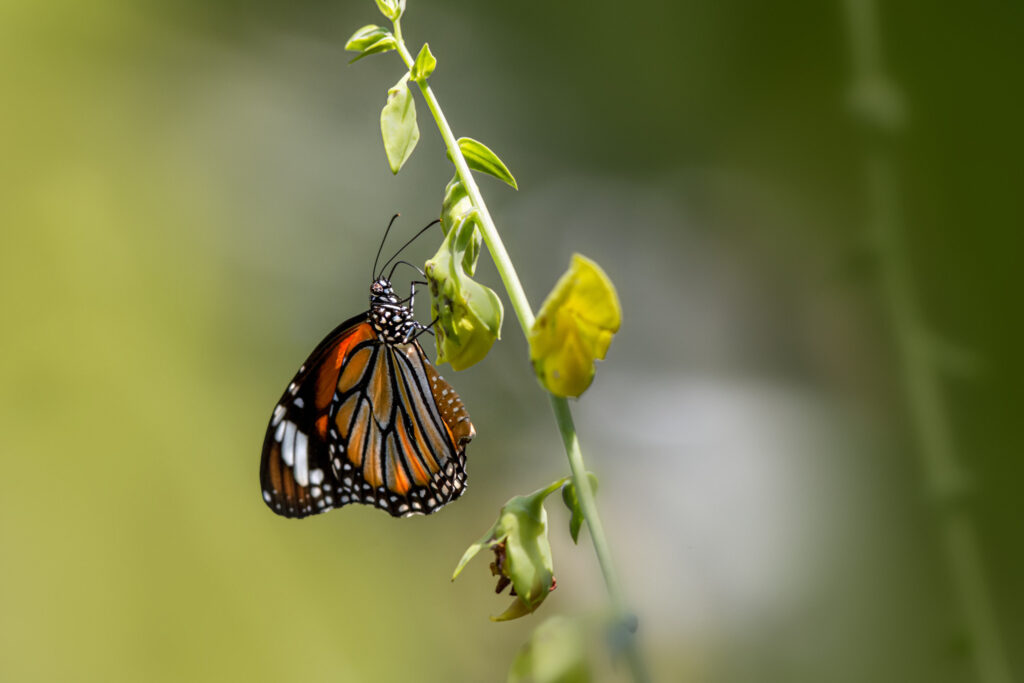
The Common Tiger (Danaus genutia) is a species of butterfly belonging to the family Nymphalidae, commonly found across South and Southeast Asia. Here are some key characteristics and information about this butterfly:
- Appearance: The Common Tiger butterfly exhibits striking colors and patterns. Its wings are predominantly orange with black stripes and veins. The forewings have a distinct black margin with white spots, while the hindwings feature a series of black marginal spots. The underside of the wings is similar in appearance but may be paler.
- Habitat: Common Tigers inhabit a wide range of habitats, including open fields, gardens, meadows, forest edges, and urban areas. They are often seen in areas with abundant flowering plants, which serve as nectar sources for adults.
- Lifecycle: Like other butterflies, the Common Tiger undergoes complete metamorphosis, consisting of four stages: egg, larva (caterpillar), pupa (chrysalis), and adult butterfly. The female butterfly lays eggs on the leaves of the larval host plants, which are typically species of milkweeds (Asclepias spp.). The caterpillars feed on the leaves of these plants, acquiring toxic compounds that make them unpalatable to predators. After several molts, the caterpillar forms a chrysalis where it undergoes metamorphosis before emerging as an adult butterfly.
- Flight Period: The flight period of the Common Tiger varies depending on the geographical location and local climate conditions. In tropical regions, they may be active throughout the year, while in temperate regions, they are typically seen during the warmer months.
- Range: The Common Tiger butterfly has a vast distribution range across South and Southeast Asia, including countries such as India, Sri Lanka, Nepal, Bangladesh, Myanmar, Thailand, Malaysia, and Indonesia. It is a common and widespread species in its range, often found in both rural and urban areas.
- Conservation: While the Common Tiger is not considered globally threatened, populations may face localized threats from habitat loss, pesticide use, and other human activities impacting their larval host plants and nectar sources. Conservation efforts aimed at preserving natural habitats, promoting sustainable agriculture practices, and raising awareness about the importance of butterflies in ecosystems can help protect this species and its associated habitats.
Overall, the Common Tiger is a beautiful and charismatic butterfly species that plays a vital role as a pollinator in various ecosystems across its range.
Visited 964 times, 7 visit(s) today
Views: 1547
Subscribe to the newsletter:
